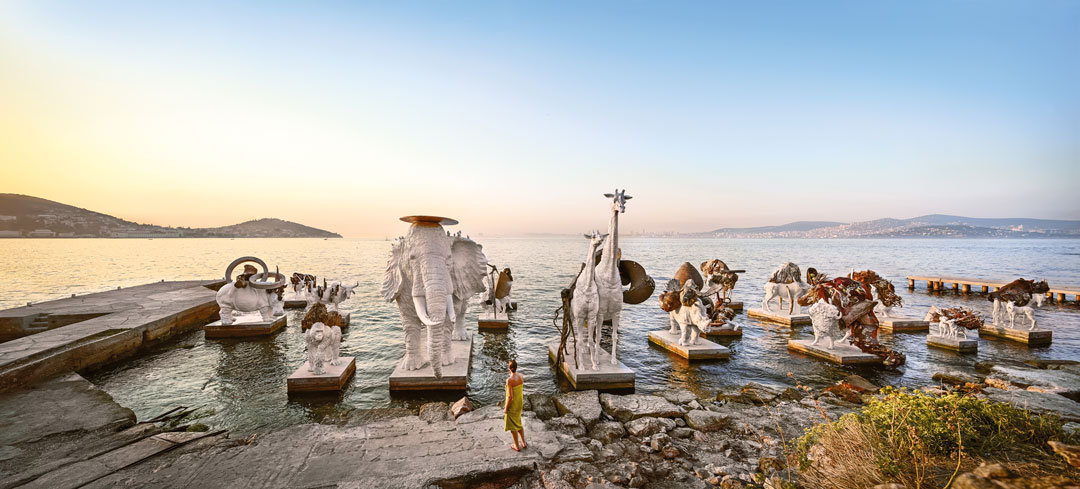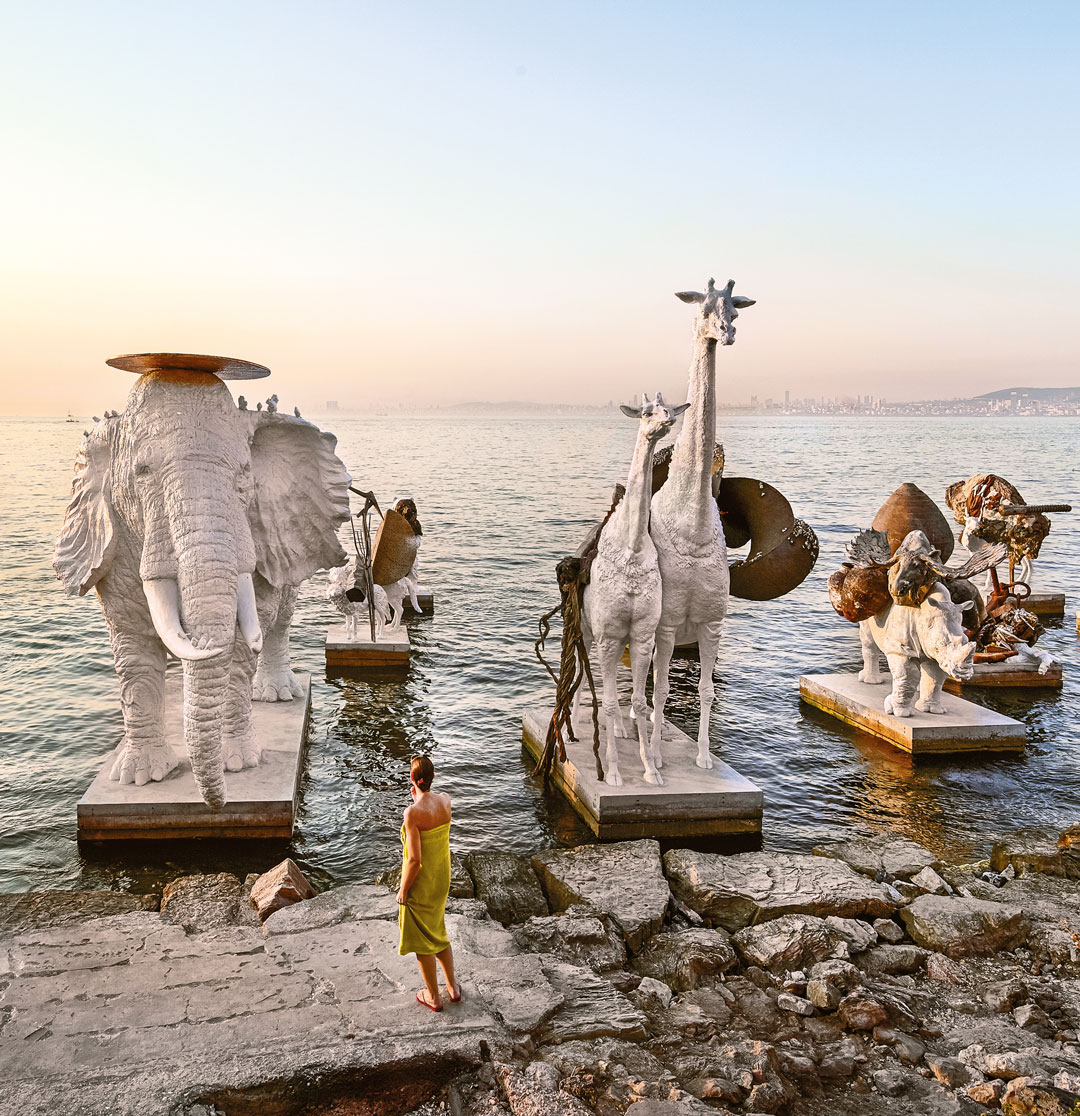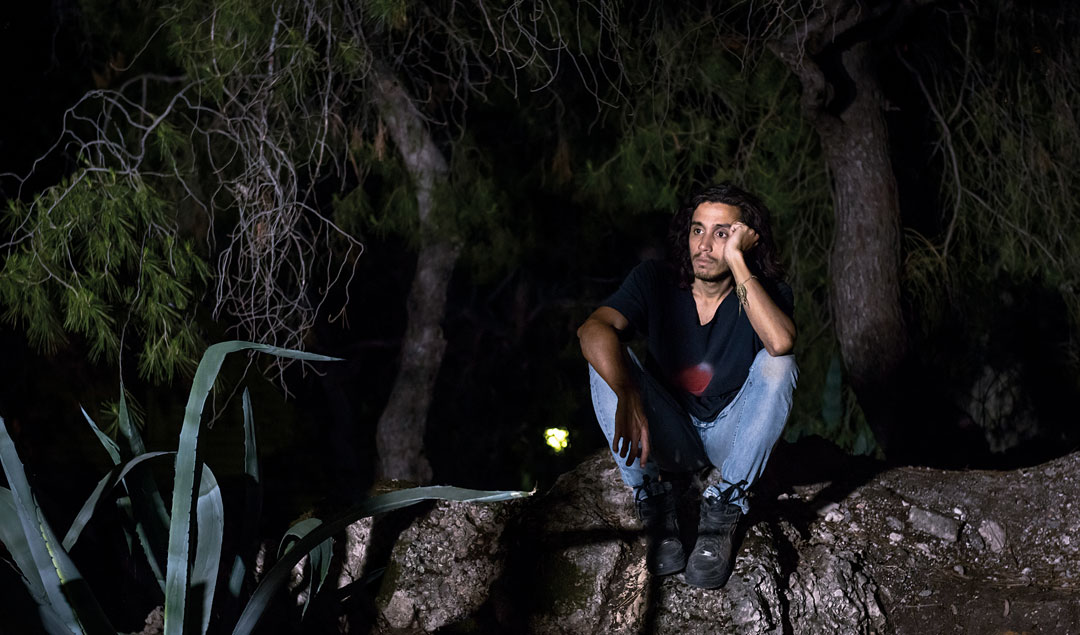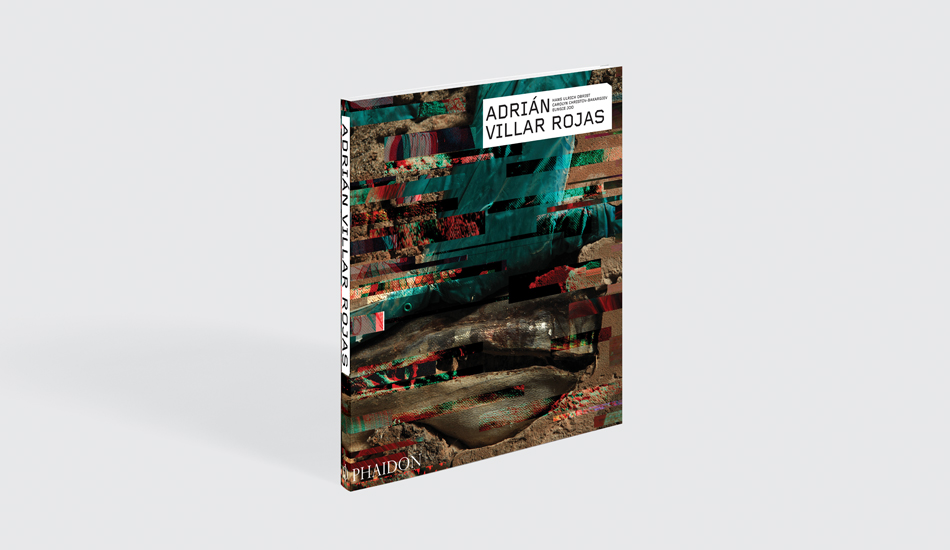
Adrián Villa Rojas staged a global rebirth on an Istanbul island
The artist turned the site of one failed world into a beautiful, dreamlike installation staged after the fall of mankind
Every school child knows how life on earth arose from the seas, and how the forces of evolution led those early sea creatures to develop into many, many other species, include humans. But what might the world look like if life on earth were banished back to that primeval state, to rise once again?
A little like the picture above, perhaps? In our new book on the artist Adrián Villar Rojas, the writer and curator Carolyn Christov-Bakargiev recalls coming across the site of this work: an island, just off the Istanbul mainland.
“One day, I went to visit the novelist Orhan Pamuk on the island of Büyükada, formerly called Prinkipo, where Leon Trotsky was exiled for four years from 1929 to 1933,” writes Christov-Bakargiev. “He showed me Trotsky’s last temporary house on the island.”
“While in exile, Trotsky hoped to continue the proletariat revolution worldwide,” she goes on, “and he was attempting to leave Turkey for a country where he would be given asylum. Every application for a visa from Constantinople was refused and none of these countries granted him entrance. Trotsky finally left Büyükada on 17 July 1933 for Mexico, never to return.”

Christov-Bakargiev was scouting for locations as part of her role curating the 2015 Istanbul Biannual. Trotsky’s failed revolutionary world, and the ruined house where he dreamed of it coming into being, proved irresistible.
She invited Adrián Villar Rojas to create a work. It was an excellent choice. The New York Times has described this important, Argentinian contemporary artist as having “a sci-fi writer’s imagination and an ecologist’s anxieties.” He’s very interested in what the world – and art – might look like after the Anthropocene, or the geological era of manmade change. His works aren’t simple, easily understood pieces, but instead the sort of stunning, large-scale works that throw up all kinds of wild associations.

For the Istanbul Biannual, he made The Most Beautiful of All Mothers, “an artwork comprising over twenty-nine sculptures of animals placed, alone or in groups, on eighteen cement platform plinths in the sea just a few metres off the pebble beach and waterfront of the house on Büyükada,” explains Christov-Bakargiev. “Reached after a walk through its garden, these sculptures depicted different species of mammals carrying other animals on their backs like loads.
“‘Perhaps’, Villar Rojas, has suggested, ‘these animals rise like zombies or monsters of the mind from the sea, return from whence we all came, the primal broth of life, and are the last inhabitants on earth, who have returned, in some imaginary future, after the catastrophes of the Anthropocene, to haunt and reclaim the land.’”
It’s a threatening, and at the same time, beautiful assembly of beasts; they might have arrived after mankind’s apocalypse, but the work’s name, and the animals’ arrangement, slouching towards the shore, suggest that, these beings are supremely uninterested in the fate of humans; in this case, as in Trotsky’s demise, the end of the world wouldn’t really be the end of the world.
To see further pictures of this work and many more, and for more commentary from Christov-Bakargiev, Hans Ulrich Obrist and the artist himself, get a copy of our new Adrián Villar Rojas book here.
